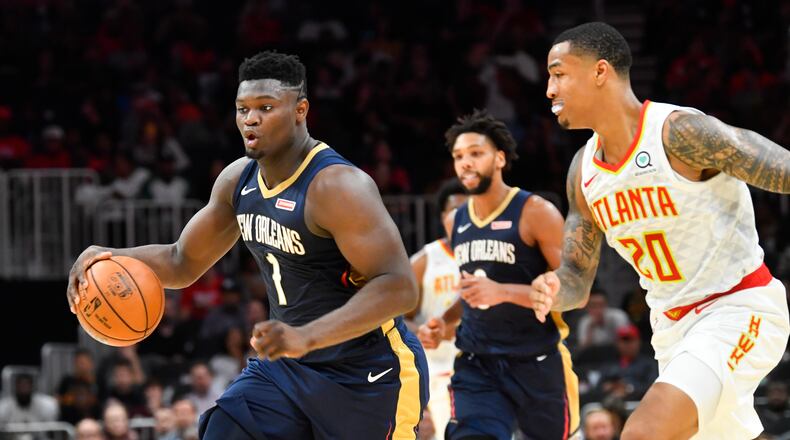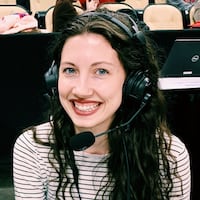During Hawks practice Tuesday, two days before the team opens the season in Detroit, Trae Young, Cam Reddish and Alex Len went through a shooting drill.
Of course, the objective is to score, but on a team with so many new faces, the purpose was to help the group learn each other’s tendencies. Coming off a dribble hand off, should you look to pass it to Len low, or is it better to throw a higher lob? What should Len expect?
What inspired the drill, according to coach Lloyd Pierce, was a previous mix-up between John Collins and Jabari Parker. Collins, accustomed to catching lobs, crashed from behind the defense, but Parker threw him more of a rifle pass, low and fast.
“Those are little nuances,” Pierce said. “We may see some of our turnovers where, it’s just that simple. … That will take some time. That’s going to take a lot of time for our guys to get to know each other in that capacity.”
The Hawks finished their exhibition games with a 1-4 record, having flashed a little defensive improvement after the initial 133-109 loss to the Pelicans on Oct. 7 (finishing 13th in opponent field-goal percentage at 42.7% and 14th in opponent 3-point percentage at 33.3%), but turnovers were a big issue outside of their win vs. the Knicks on Oct. 17 (in which they registered 11, compared with their preseason average of 22.8, which ranked next-to-last in the league).
Entering the regular season, it’s the little things like knowing a teammate’s tendencies that can limit turnovers as much as possible -- especially since the Hawks still want to play with pace this year.
The team has spent some time this week getting organized and hashing things like that out.
“When we’re organized, we get shots,” Pierce said. “When we play fast, we attack before the defense is set and our points per possession is a lot higher. So I don’t know if our turnovers is a result of being fast all the time, I think it’s more of being unorganized. Sometimes we’re attacking when there’s nothing there, and we’re trying to play out of it, and we don’t have spacing down and guys don’t really know where to go. If there’s something there, I want our guys to take it. … But if not, I think we need to be organized.”
Breaking in new personnel also is a factor, as the Hawks shuffle through different lineups.
“Sometimes Jabari’s out there at (power forward), and John’s out there at (center),” Pierce said. “Who rolls? Who pops? When we don’t have a set where we can dictate that, they’re just kind of figuring it out on the fly.”
For Collins, it’s just a process of developing chemistry with different players and everyone understanding their roles.
“Say I’m with (Alex Len), I might pop a little bit more,” Collins said. “If I’m with Jabari, we can definitely switch it up. And say if I’m with Vince (Carter), I’m definitely rolling, you know what I mean? … It’s all about finding that right, niche chemistry with everybody. It takes time.”
Chemistry is also something that can be developed through conversations or time spent together off the court, per Young, who averaged 6.6 assists and 4.8 turnovers through five exhibition games.
As far as player tendencies, he had already been watching Parker since Parker’s days at Simeon Career Academy in Chicago, had watched plenty of Damian Jones with the Warriors and had known rookies Reddish and De’Andre Hunter since they were in high school, which makes playing together an easy adjustment.
“It’s easier for me to adjust to their games and know where they like to have the ball,” Young said. “That’s what hanging out outside the court is for, too. I ask them a lot of questions, where they like the ball, where they like to get their shots, and I think that’s part of building chemistry.”
About the Author
Keep Reading
The Latest
Featured


